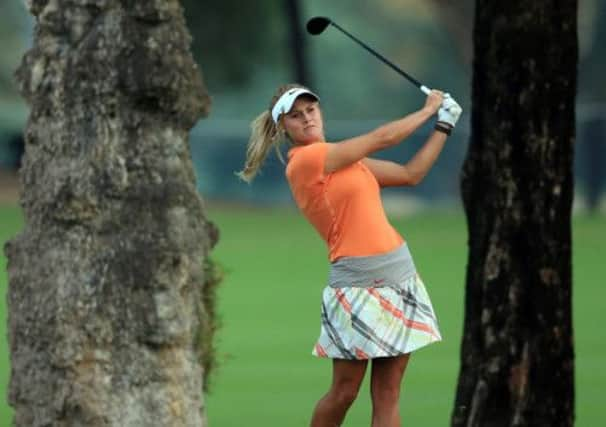Scots golf: Lucrative Open but clubs hit by downturn


Though takings remain below pre-recession levels – the downturn hit attendances at Turnberry in 2009 – British golf’s premier event continues to generate multi-million pound windfalls for its hosts. Last year’s Open Championship at Royal Lytham & St Annes Golf Club boosted the Lancashire economy by an estimated £65 million, a figure that is forecast to rise to £70m when the competition returns to Scotland this summer.
It has been de rigueur for some years to promote the economic benefits of hosting such major events. Likewise, VisitScotland regularly measures the value of golf tourism, which is worth about £220m annually.
Advertisement
Hide AdAdvertisement
Hide AdHowever, there has never been a root-and-branch review of the entire Scottish industry, much of which is founded upon the nearly 580 clubs catering to golfers from Shetland to Stranraer.
That is set to change this week, when the Scottish Golf Union (SGU) releases the findings from its Golf In Scotland report. The study, compiled by KPMG with help from Scottish Enterprise and VisitScotland, will be unveiled on Tuesday at the Golf Business Forum in St Andrews.
In addition to major international events and golfing tourists, the SGU survey will look at revenue and employment levels in areas such as golf facilities, golf supplies and new developments. Membership, green fees and food sales by private clubs and pay-to-play facilities will also be covered.
Gordon Todd, of Scottish Enterprise, said: “Over the years there have been a number of studies into the economic impact of golf tourism and its associated benefits, but to date there has been no single overview of the wider golf industry in Scotland and its associated economic benefits.
“The aim of this latest research, therefore, is to create the first comprehensive and definitive baseline study of the whole golf industry in Scotland.”
Courses have felt the strain of the economic downturn in what was already a competitive market. Relatively few have suffered the fate of the Inchmarlo near Banchory – which went into liquidation this year – but more are believed to be facing financial collapse.
SGU chief executive Hamish Grey has pointed out that while there has been a 20 per cent rise in Scottish facilities since the early 1990s, there has been no increase in the number of golfers. Within that, club golf continues to decline, with the total number of adult memberships in Scotland falling to fewer than 211,000 last year, more than 20,000 off the peaks of 2006.
A separate study due to be released on Tuesday promises to reveal some of the reasons for this shift, plus suggestions for reversing these trends.
Advertisement
Hide AdAdvertisement
Hide AdThe Participation And Ideas For Growth survey questioned 1,500 golfers and 2,000 non-golfers in a bid to discover why some people leave the sport, plus factors that would attract new players. It also suggests there is “significant latent demand for golf that is going untapped”.
Lack of time is often cited as the reason many people take up other interests, while financial constraints have taken a toll. There is also a growing acknowledgement across the sector of the need to bring more women into the sport. While there are more golfers in Great Britain and Ireland than in the rest of Europe combined, fewer than 15 per cent of those 4.2 million players are women. The ratio in Scotland is similar, falling well short of the European average of 24.6 per cent.
Boosting the percentage of women golfers will hinge on efforts to become more “female friendly”, but as the continuing furore over Muirfield’s men-only membership policy shows, tensions still linger across golf’s gender divide.
The Honourable Company of Edinburgh Golfers came under pressure last year when it refused to follow Augusta National, the home of the Masters, in a break with its men-only tradition. The issue has been building up steam again as Muirfield prepares to host its 16th Open, with calls for men-only clubs to be struck off the competition rota.
Pro golf’s leading female players have been tentative on the subject, with Scotland’s Catriona Matthew suggesting the clubs will “do it in their own time”. England’s Melissa Reid said it would “be nice” if the Open wasn’t staged at men-only clubs, though this was unlikely to happen because of the high quality of the venues.